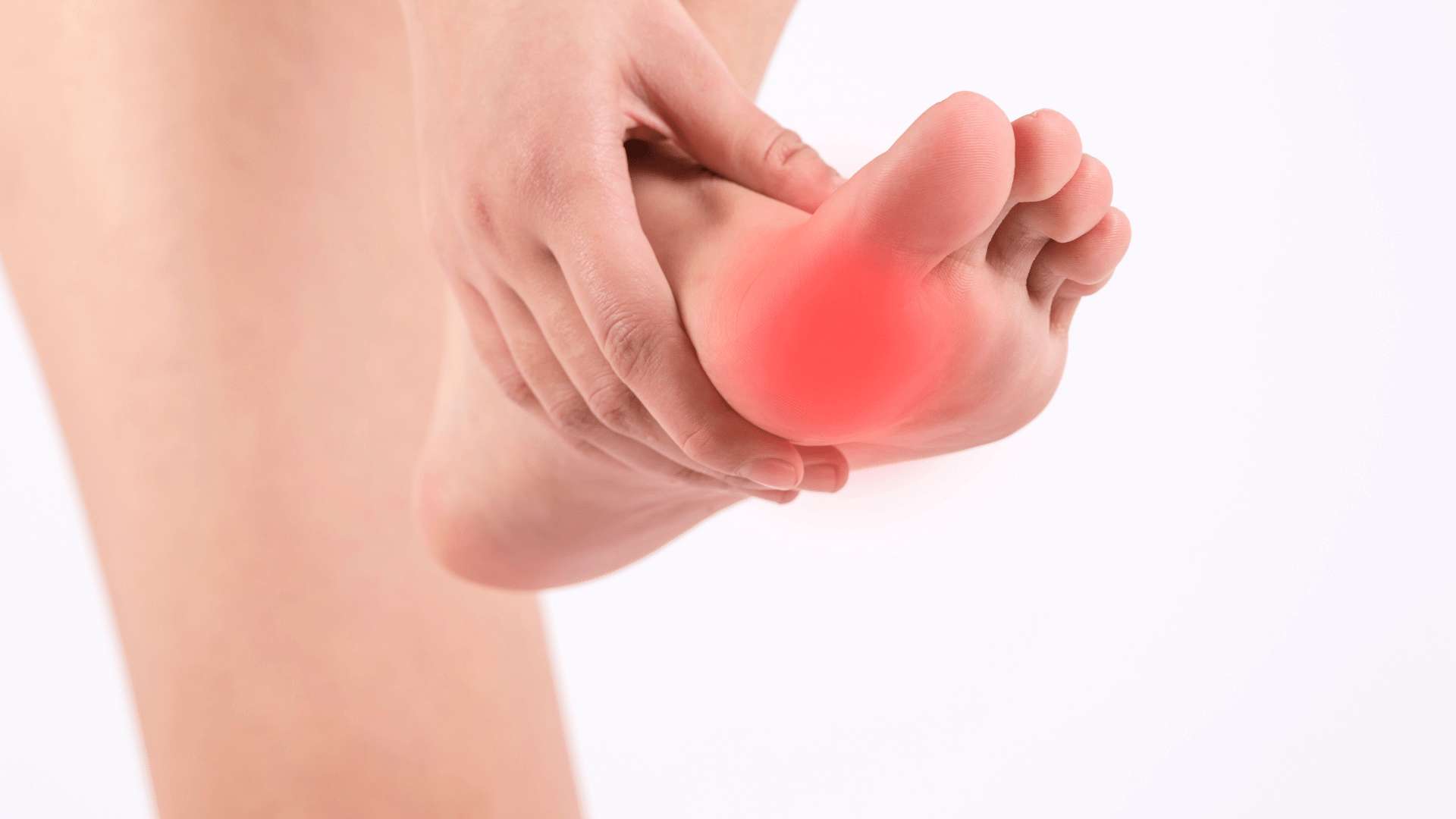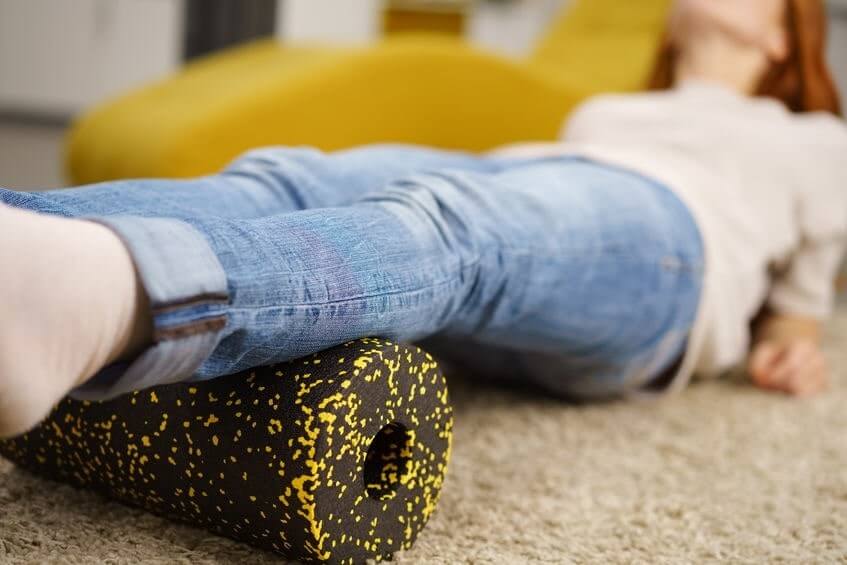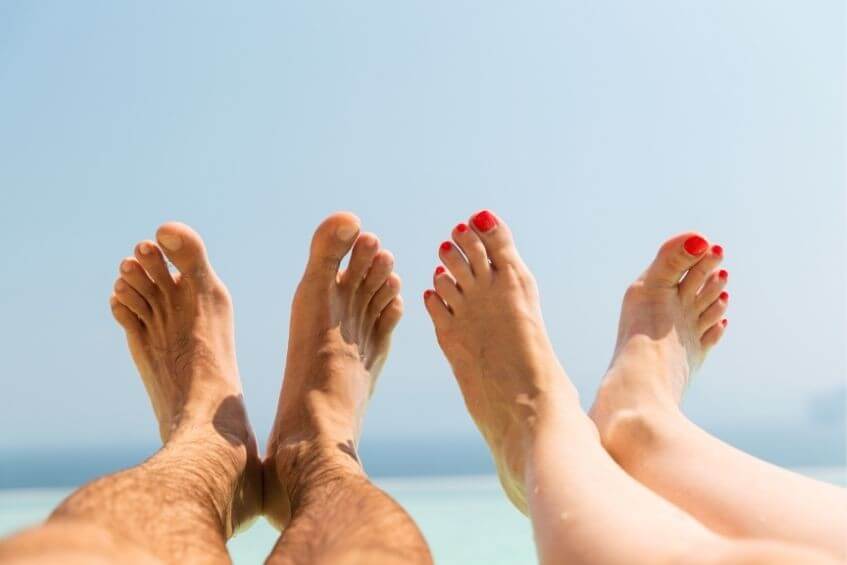
Jump to section
Morton's neuroma develops in the plantar digital nerves that run between the long bones in your foot. These nerves can become irritated from compression and friction trauma of the surrounding tissue. If this trauma is constant and repeated, it results in chronic thickening and swelling of the lining of the nerve that's located between your toes. The thickened “bulbus” in the lining of the inflamed nerve is known as a Morton's neuroma. It can unfortunately be a rather painful condition that you will feel in the ball of your foot.
Morton's neuroma commonly occurs between the third and fourth toes on your foot, however, it can occasionally appear between other toe joint spaces.
Tight and poor fitting footwear, especially high heels, are the main cause of Morton's neuroma. They cause the nerves in your feet to become irritated and compressed, usually from "shoving" the toes into a tapered or small toe box. High heels also have a sloping shape, which puts added pressure on the ball of your foot when worn.
Morton's neuroma can also be caused by foot and gait abnormalities. Abnormal mobility and range of motion in your foot joints can increase the loading on the ball of your foot.
Additionally, activities that involve repetitive and increased loads to the ball of your foot, such as running or court sports can cause irritation in these nerves.
Considering the potential causes of Morton's neuroma, there are certain factors that can increase your risk of developing the condition:
Morton's neuroma commonly occurs between the third and fourth toes on your foot, however, it can occasionally appear between other toe joint spaces. If you start to experience pain on the ball of your foot, then you may have Morton's neuroma.
Other symptoms associated with the condition may include:
If you think you might have a neuroma, you can perform the Morton's neuroma test on yourself by squeezing the ball of your foot from the
sides, firmly. If this reproduces your pain or worsens it, you may have a neuroma.
The signs and symptoms of Morton's neuroma closely resemble those of other forefoot (ball of your foot) conditions. Hence, it is important for one of our podiatrists to diagnose your condition and formulate a treatment pathway.
Our podiatrists can confirm your condition by firstly completing a physical assessment of the area and further specialised neuroma assessments. If we think that it is a neuroma, ultrasound imaging may be used to confirm the diagnosis and assess the severity of it.
The first step is ensuring we reduce your pain as quickly as possible. After we have completed your assessment in the clinic, we can put together your personalised treatment plan that allows you to achieve the fastest and most effective recovery.
Your plan will usually have a combination of the following treatments:
If your pain persists, our podiatrists may recommend one of the following more invasive treatments:
Our podiatrists will also recommend long term measures to decrease your chance of recurrence. This would include suggestions for appropriate fitting footwear.
To initially prevent Moreton's neuroma, or prevent recurrence of the condition, the following factors may help to reduce your risk:

The more tense you (or your muscles, ligaments and all sorts of fibres) feel, then the more pain you will understandably perceive. Here are
three ways to help relieve this tension in your feet.

Not everyone needs orthotics, but they can play an integral role in treating or relieving pain in several foot and lower limb conditions.

The heat and humidity of an Australian summer makes it a prime time for issues to arise, so our newest podiatrist Lucy has put together
seven helpful tips to keep your feet healthy and problem free throughout summer.
| Monday | 7:40am - 6:00pm |
| Tuesday | 7:40am - 6:00pm |
| Wednesday | 7:40am - 6:00pm |
| Thursday |
7:40am - 6:00pm |
| Friday | TEMP CLOSED |
| Saturday | CLOSED |
| Sunday | CLOSED |
Ground Floor, 344 Queen Street,
Brisbane City QLD 4000
| Monday | 7:40am - 6:00pm |
| Tuesday | 7:40am - 6:00pm |
| Wednesday | 7:40am - 6:00pm |
| Thursday |
7:40am - 6:30pm |
| Friday | 7:40am - 5:00pm |
| Saturday | 7:40am - 4:30pm |
| Sunday | CLOSED |
Newmarket Village, 114/400 Newmarket Rd, Newmarket QLD 4051